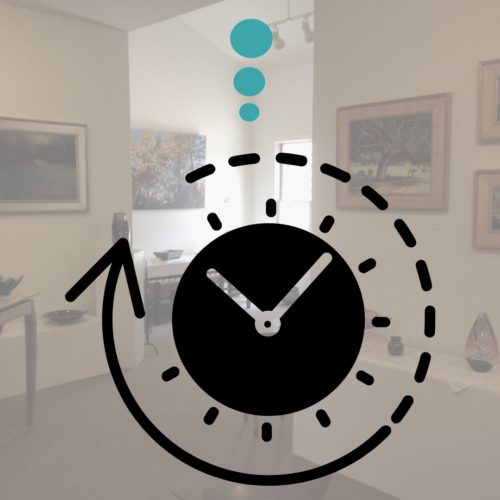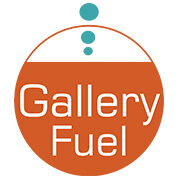As in any industry, it is easy to get weighed down with the day-to-day running of an art gallery business. Today’s working environment is riddled with distractions: clients, email, social networking, phone calls, and administrative tasks. Entire days can be filled with a series of small but necessary tasks that don’t significantly impact long-term success. Cultivating time management skills for your art gallery’s strategic growth and development for the future is a continuous process.
As an art gallery professional surrounded by creative thinkers, you may feel you can’t find the time, focus, and creative energy needed for gallery development projects. Very frustrating…
In this article, let’s find ways to cultivate that precious time you need. Here you will learn techniques that can increase your focus and creative thinking and result in more productive days that fuel your business growth and success.
 The needle-moving tasks of running the gallery
The needle-moving tasks of running the gallery
An art gallery business has many important tasks that require focus and creative thinking:
- Designing compelling and memorable shows
- Developing and strengthening the gallery program
- Generating fresh marketing and sales planning initiatives
- Building gallery services
- Nurturing artist relationships and pursuing career-building initiatives for them
- Tapping into new art collector resources
- Creating great content for your website, newsletters, blog, and catalogs
- Providing strong leadership for gallery staff and your art community
These projects don’t often get the attention they deserve because the work days are so reactionary to other demands. Responding to emails and phone calls, keeping your social media and website updated, cleaning the gallery, and managing relationships are all essential day-to-day tasks that must be done to keep the business running.
To evolve your business for long-term success, one must plan carefully and continuously try new strategies to help you achieve your goals. Accomplishing this takes dedicated time and skill.
To be successful in today’s work environment, you should cultivate three key skill sets to increase focus and creative thinking.
- Ritualized routines
- Techno smarts
- Resetting your creative mind
The first step in tackling these is prioritizing your art gallery’s development projects requiring extra focus and creativity. Then determine which ones will have the most significant impact on your gallery’s future.
Many of your priorities are likely tied to business goals with a deadline. Some tasks will be an immediate priority, and others can be accomplished in phases over weeks or months. Plan time to work on strategic gallery projects on your calendar for daily, weekly, and monthly tasks. With a plan made upfront, you won’t have to doubt how you spend time or what your priorities are at the moment.
Creating routines or systems for managing the art gallery business
With your priorities identified, devote time at the beginning of each work day to work on a development priority. Try to make this habit that becomes automatic and a part of your mindset.
Your mind is the freshest and most creative in the morning. Your gallery business (and you) deserves to have the best and most crucial work come first, above all the busy work and demands of others. Come in early, if necessary, to take advantage of the quiet time needed for this work.
Make this time a ritual part of your day. Try setting up triggers that help you focus on these kinds of tasks. For example, triggers could be clearing your desk of all distractions, listening to music that inspires you or setting the lighting a certain way. What work environment changes do you need to make to help you focus?
Set the mood for brilliant strategic work
Create a place or environment you can visit every day to focus on your art gallery’s strategic development projects. The consistency of this ritual will act as a trigger as well for your clear and creative thought process.
Give yourself 90 minutes to work on your projects and ideas as a priority.
After 90 minutes, your brain gets tired, causing focus to dwindle. For example, one morning, you may spend 90 minutes reviewing your exhibition calendar and planning creative ways to make each show more attention-grabbing for your collectors, prospects, and media. The following day, you might work on a draft of your marketing plan that steps outside the box of what your gallery typically does to attract new art buyers.
Most importantly, show up. People are rarely in the mood to take on challenging but essential tasks for business success. Don’t allow yourself to procrastinate by doing more minor tasks first. Before you know it, your whole day (and the opportunity for greatness) will be gone.
Making this 90-minute time window a routine will significantly impact your business and your motivation levels. You will feel tremendous satisfaction knowing that your vision for growing your gallery business is moving forward.
Techno smarts to help with time management
Technology can be a real business asset, but we can all waste valuable hours using it.
Think of all the interesting yet unimportant emails you receive daily or the time you spend surfing social media sites. How many times a day is your focus interrupted by the phone ringing or a text message?
Being techno smart means becoming disciplined and mindful about how you use today’s technology and not allowing it to distract you from the important tasks required for your art gallery business’s success. It’s good practice to unplug regularly when you need to do some creative thinking about developing your gallery business.
You have likely heard of the advantages of turning off email, cell phones, and other distractions that take away time that could have been spent on a higher purpose. How often do you actually do it when you need to focus? Make this part of your productivity system.
Try these apps for using the Pomodoro technique. These help you track time spent on a project and help give your mind rest when needed.
If your environment is noisy, try an app that provides white noise to help you concentrate. One example is Focus @ Will. It creates optimized soundtracks to help drown out gallery chatter or art installation, which can help you focus.
Also, regularly opt out of emails that clutter your inbox and add little value to your business or life. Much of this may sound like common sense, but you would be surprised how many people don’t do it, and it is difficult to measure how much time is wasted as a result.
Resetting your creative mind for strategic art gallery growth
As we discussed above, developing a systemized work routine in a consistent place can set the tone for great work. However, all creative minds get stuck or blocked. It’s just human.
When this happens, you need to learn how to reset your mind. For many successful professionals, this means completely stepping away from what has you stuck.
When you give your mind a chance to rest, you will have the most original ideas for solving problems. Go for a walk, work on a mindless gallery task for 15 minutes, or call one of your artists to hear about their latest projects.
The goal is to redirect your mind to something unrelated to what has you stuck. When you return to it, you may view the challenge in a new light.
Resetting your mind can also help you achieve your goal in less time. When feeling blocked, it is common to spend too much time trying to work through a challenge; the solution will often come faster if you allow your mind to rest for a short time.
To the Point
Cultivating the skills of building a routine, being mindful of your technology use, and resetting your mind when creatively challenged will help you achieve more than simply plowing through a task list. The frustrations you feel about your gallery’s future development may also decrease because you will be able to see your progress every day. That’s the beauty of using a system for accomplishing big tasks.
You will need to personalize these skills for what works best for you. Experiment to find the most effective for your work demands, preferences, and habits.
Don’t allow the day-to-day of managing the gallery to prevent future growth and strategic development. Give your gallery business the focus and creative energy it needs and put the demands of others second.
You might also find these articles helpful for fueling your time management for strategic art gallery growth
How to Find Balance in Art Gallery Management: Operational and Strategic
How to Create an Annual Art Gallery Strategy Plan
How a Vision Statement Drives Growth for your Art Gallery


Leave a Reply